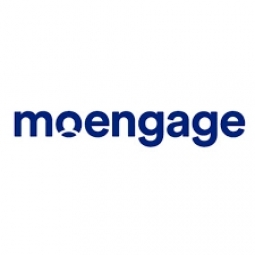技术
- 网络与连接 - 5G
- 平台即服务 (PaaS) - 应用开发平台
适用行业
- 建筑物
- 城市与自治市
适用功能
- 采购
- 销售与市场营销
用例
- 行为与情绪追踪
- 牲畜监测
关于客户
Luxstay 是一家位于越南胡志明市的在线短期租赁平台和酒店服务。 Luxstay 成立于 2016 年,旨在弥合房主和旅行者之间的差距,让自助旅行变得更容易,并帮助房主从其房产中获得更多收入。 Luxstay 在越南备受追捧的度假胜地提供多种住宿选择,如公寓、别墅、单间公寓和独栋别墅。 Luxstay 拥有超过 15,000 套房源,每月预订量约为 20,000 笔,每月增长率为 20%。
挑战
Luxstay 是一家总部位于越南的在线短期租赁平台,其用户参与策略面临着挑战。越南的房屋共享市场竞争激烈,要求 Luxstay 在所有渠道上提供个性化且一致的沟通。然而,他们现有的营销自动化平台存在局限性,包括缺乏用户行为分析、渠道连接差距以及用户参与度没有适当的连续性。这些问题对品牌的活跃使用和转化产生了负面影响。 COVID-19 大流行使事情变得更加复杂,因为 Luxstay 需要在持续的不确定性期间与用户保持一致的沟通。该团队希望了解用户行为,根据各种属性对用户进行细分,并整合所有参与渠道。然而,他们当前的解决方案无法满足这些需求,导致 Luxstay 寻求一个可以提供更统一参与的平台。
解决方案
为了应对日益扩大的参与度差距和 COVID-19 大流行的高峰,Luxstay 的营销团队决定采用不同的用户参与平台。经过深思熟虑和严格研究,他们选择了MoEngage。该平台使 Luxstay 能够自动化参与、细分用户和个性化沟通。 Luxstay 的团队首先使用 MoEngage 的自定义细分来整理和分析客户数据,这有助于他们了解购买行为以及用户与其应用程序和网站的交互。这种理解使 Luxstay 能够通过将客户需求与可用房产相匹配来个性化用户体验。 Luxstay 还使用 MoEngage 的数据将用户分为四类:单独旅行者、没有婴儿的夫妇、有一个或多个孩子的夫妇以及一起旅行的朋友。这些用户根据他们的行为进一步细分,例如住宿的价格范围、入住类型和位置。这种细分使 Luxstay 能够个性化他们的沟通并提高转化率。
运营影响
数量效益

Case Study missing?
Start adding your own!
Register with your work email and create a new case study profile for your business.
相关案例.

Case Study
Turning A Stadium Into A Smart Building
Honeywell created what it called the “intelligent system” for the National Stadium in Beijing, China, turning the venue for the opening and closing events at the 2008 Summer Olympics into a “smart building.” Designed by highly controversial artist Ai Weiwei, the “Bird’s Nest” remains one of the most impressive feats of stadium architecture in the world. The 250,000 square meter structure housed more than 100,000 athletes and spectators at a time. To accommodate such capacity, China turned to Honeywell’s EBI Integrated Building Management System to create an integrated “intelligent system” for improved building security, safety and energy efficiency.

Case Study
Energy Saving & Power Monitoring System
Recently a university in Taiwan was experiencing dramatic power usage increases due to its growing number of campus buildings and students. Aiming to analyze their power consumption and increase their power efficiency across 52 buildings, the university wanted to build a power management system utilizing web-based hardware and software. With these goals in mind, they contacted Advantech to help them develop their system and provide them with the means to save energy in the years to come.
.png)
Case Study
Smart Street Light Network (Copenhagen)
Key stakeholders are taking a comprehensive approach to rethinking smart city innovation. City leaders have collaborated through partnerships involving government, research institutions and solution providers. The Copenhagen Solutions Lab is one of the leading organizations at the forefront of this movement. By bringing together manufacturers with municipal buyers, the Copenhagen Solutions Lab has catalyzed the development and deployment of next-generation smart city innovations. Copenhagen is leveraging this unique approach to accelerate the implementation of smart city solutions. One of the primary focus areas is LED street lighting.

Case Study
Buoy Status Monitoring with LoRa
The Netherlands are well-known for their inland waterways, canals, sluices and of course port activities. The Dutch Ministry of Infrastructure indicates that there are thousands of buoys and fixed items in and near water environments that would profit from IoT monitoring. One of the problems with buoys for example, is that they get hit by ships and the anchor cable breaks. Without connectivity, it takes quite some time to find out that something has happened with that buoy. Not to mention the costs of renting a boat to go to the buoy to fix it. Another important issue, is that there is no real-time monitoring of the buoys at this moment. Only by physically visiting the object on the water, one gains insight in its status.

Case Study
Barcelona Case Study
Barcelona’s heavy traffic and its associated high levels of pollution were the primary factors that motivated some companies and universities to work on strategies for improving traffic in the city centre. Bitcarrier is one of the technologies involved in the In4Mo Project, whose main objective is to develop the applications that form the core of smart mobility, one of the fundamental pillars of the smart city concept.








